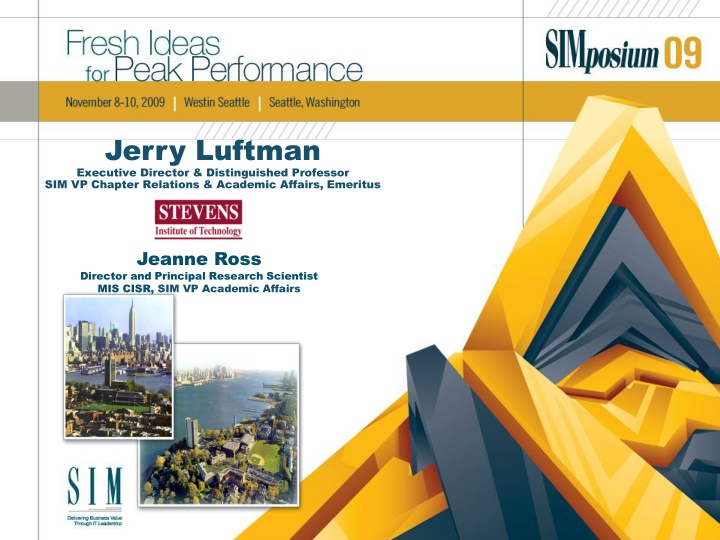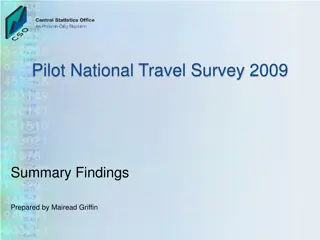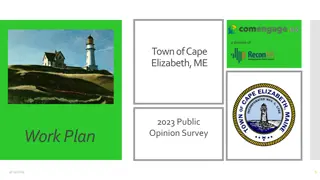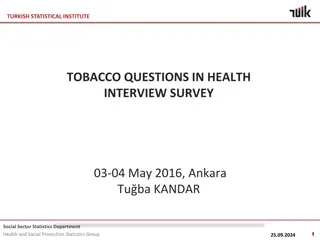
IT Management Trends and Budget Analysis 2009-2010
Explore the key findings on IT management concerns, application investments, budget comparisons, and budget allocations for the years 2009 and projections for 2010. Understand the shifts in priorities, investments, and company budget allocations in the IT landscape.
Download Presentation

Please find below an Image/Link to download the presentation.
The content on the website is provided AS IS for your information and personal use only. It may not be sold, licensed, or shared on other websites without obtaining consent from the author. If you encounter any issues during the download, it is possible that the publisher has removed the file from their server.
You are allowed to download the files provided on this website for personal or commercial use, subject to the condition that they are used lawfully. All files are the property of their respective owners.
The content on the website is provided AS IS for your information and personal use only. It may not be sold, licensed, or shared on other websites without obtaining consent from the author.
E N D
Presentation Transcript
Jerry Luftman Executive Director & Distinguished Professor SIM VP Chapter Relations & Academic Affairs, Emeritus Jeanne Ross Director and Principal Research Scientist MIS CISR, SIM VP Academic Affairs
Ranking of 2009 IT Management Concerns Priority 1 1 Business productivity and cost reduction 2 IT and business alignment 3 Business agility and speed to market 4 Business Process Re-engineering 5 IT cost reduction 6 IT reliability and efficiency 7 IT strategic planning 8 Revenue generating IT innovations 9 Security and privacy 10 CIO leadership role 11 Enterprise architecture 12 Outsourcing/vendor management 13 Project management 14 Change management 15 Globalization 16 IT organization design 17 IT human resource considerations 18 Knowledge management 19 Sourcing decisions 20 Societal implications of IT 52 31 23 18 17 15 13 11 9 6 4 4 4 3 2 2 1 1 1 0
Top 6 Application & Technology Investments 2009 1 Business intelligence 2 Server virtualization 3 Enterprise resource planning (ERP) systems* 4 Customer/corporate portals* 5 Enterprise application integration/management (EAI/EAM)* 6 Continuity planning/disaster recovery * New to top 6
2009 IT budget in comparison to 2008 (Actual) 2009<2008 52% (*26%) 2009>2008 25% (*46%) 2009=2008 23% (*28%) 48% (*2008 74%)
2010 IT budget will be in comparison to 2009 (Projected) 2010<2009 28% 2010>2009 27% 2010=2009 45% 72% (*Back to pre recession range)
Companies Increasing IT Budget 70 62.5% 62.5% 61.3% 61.3% 56.6% 56.6% 60 51% 51% 53.6 Prior to Recession 46% 46% 50 40 27% 27% 25% 25% 30 20 10 0 2004 2005 2006 2007 2008 2009 2010 Projected
2009 IT Budget Allocation (Actual) Internal Staff - Domestic 39% Internal Staff - Offshore 4% (35%) Hardware, Network, Software, Depreciation 33% Consulting Services 12% Outsourced Staff - Domestic 8% (42%) (10%) (3%) (5%) Outsourced Staff - Offshore 4% (2008 when budgets were higher)
2009 IT Staff Turnover Rate 80 70.94 70 60 50 40 30 15.64 20 7.82 10 2.79 2.23 0.55 0 <5 % 6%-10% 11%-15% 16%-20% 21%-25% >25% 6.90 2009 Average 7.20 8.40 8.13 2006 Average 2008 Average 2007 Average
2010 IT Budget Allocation (Projected) Internal Staff - Offshore 6% Consulting Services 11% Outsourced Staff - Domestic 9% (4%) (12%) Internal Staff - Domestic 37% (8%) (39%) Hardware, Network, Software, Depreciation 31% (4%) Outsourced Staff - Offshore 6% (33%) (2009)
IT Budget allocation for Offshore Outsourcing 6.0 6 4.2 5 4.0 4.0 3.3 4 3 1.7 2 1 2009 2010 Projected 2005 2006 2007 2008 0
IT Budget As Percent of Corporate Revenue 2009 IT BUDGET:4% 9.14% IT BUDGET:3% 12.00% IT BUDGET:5% 12.00% IT BUDGET:6% 4.00% 41.7% (2008: 38.6) 58.3% (2008: 61.4) IT BUDGET:2% 24.57% IT BUDGET:7% 4.00% IT BUDGET:8% 3.43% IT BUDGET:9% 0.57% IT BUDGET:10% 6.86% IT BUDGET:1% or Less 21.71% IT BUDGET:Greater than 10% 1.71% Average: 3.83 (2008: 3.82) (2005-9: 3.67)
2009 IT Staff Salaries in Comparison to 2008 (Actual) 2009 < 2008 19% (2008: 4%) 2009 > 2008 34% (2008: 78%) 2009 = 2008 47% (2008: 18%) 81% (*2008 96%)
2010 IT Staff Salaries in Comparison to 2009(Projected) 2010 < 2009 9% (2009: 19%) 2010 = 2009 46% 2010 > 2009 45% (2009: 47%) (2009: 34%) 91% (*Back to pre recession range)
CIO or Senior IT Executive Reports To Other (Board of Directors) 7% Business Unit Executive 10% [7%; 3.20] COO 15% [18%; 2.97] CFO 25% [26%; 2.79] CEO/President 49% [42%; 3.26] [Average; Alignment Maturity]
How long has your CIO (or senior IT executive) held their position? 48% > 3 Years (2008 45%) 6 Years 4% 5 Years 8% 7 Years 7% 4 Years 8% >7 Years 22% 3 Years 16% 2 Years 16% <1 Year 12% 1 Year 7% 2009 Average: 4.6 Years 2008 Average: 4.3 Years 2007 Average: 4.1 Years 2006 Average: 3.6 Years 52% =< 3 Years (2008 55%)
HowCIOs spend their time Relationship Management with Business 19% (2008: 26%) Operations* 11% (2008: 8%) Relationship Management with IT staff 12% (2008: 15%) Non-IT 10% (2008: 6%) Software Development* 6% (2008: 4%) IT Governance 10% (2008: 11%) Human Resources 8% (2008: 7%) Strategy 15% (2008: 17%) Architecture* 7% (2008: 6%) * 76% time non-technical (2008 >80%)
2009 IT Organization Centralized 70.4% *2.87 Decentralized 9.5% Federated/Hybrid 18.4% *2.64 *3.03 [ 22.2%; 18%; 15.7% Federated ] Other 1.7% [2008; 2007; 2006 findings] *Alignment Maturity
Next Steps Complete final data collection (from SIMposium responses) Assimilate the data from Europe & China Further analysis Publish results (e.g., SIM News, MISQE) Use findings as input for future SIM meetings(Local & National) Consider findings for new Working Groups or Communities of Interest PLEASE FILL OUT NEXT YEARS SURVEY!!!






















